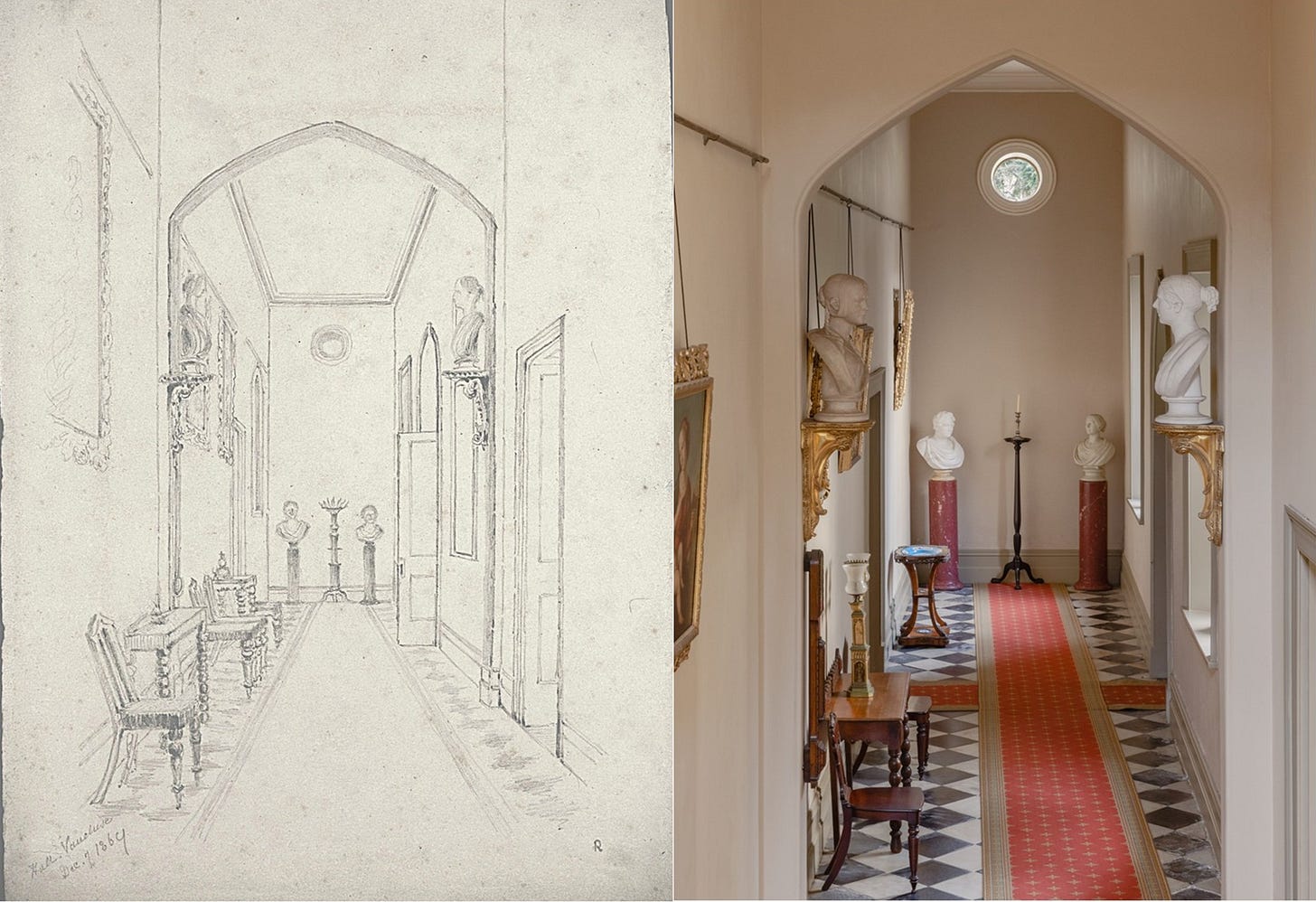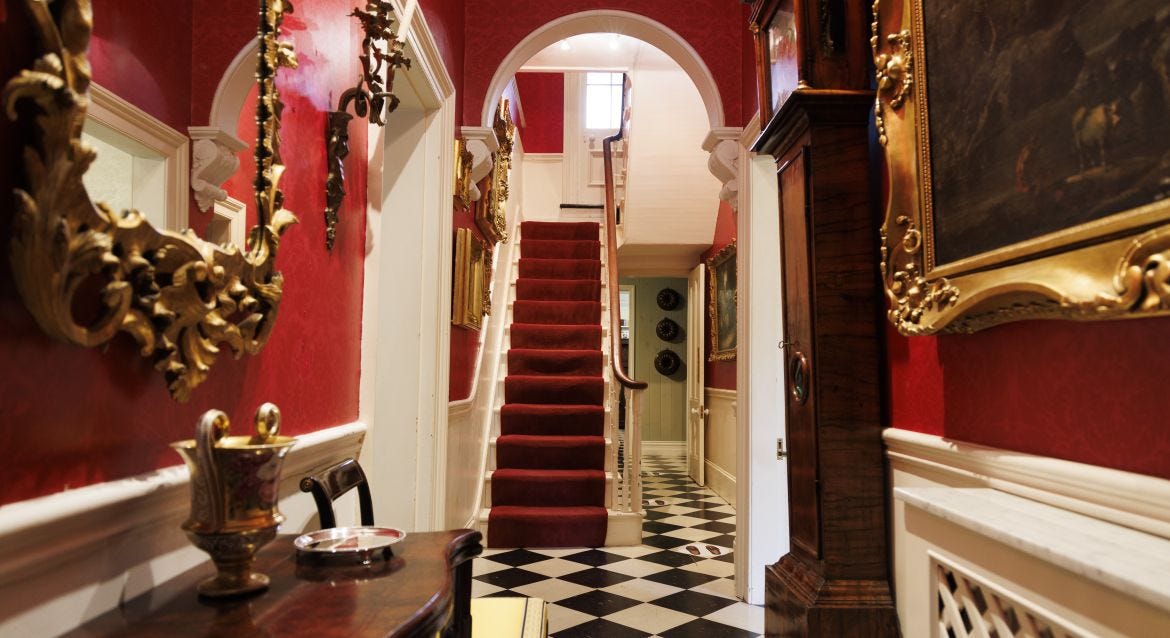Warning: Museum magic inside. Beware time warps.
Alison Lloyd's newsletter #53
Do you like museums? If you don’t, let me lure you in.
I didn’t like them much when I was a kid. They always seemed gloomy and echoing. Everything was behind glass, dead and untouchable. My memories of most of the museums we saw in Europe are as dim as their lighting. If that’s how you feel about museums too, maybe this email can help you see differently.
The museum that changed my mind was the Historiska Museet in Stockholm. On the top floor, the garret had been made into a reconstruction of a poor family’s nineteenth century home. I remember being struck by how cramped, and shabby it seemed. So little light came through the garret windows. Thirteen-year-old me was moved. This was what the Industrial Revolution looked like up close and personal. This wasn’t a comfy life. I suddenly realised how materially rich and brightly coloured my life was. The museum was a powerful experience.
(No pics of it sorry. Thirteen-year-old me was many, many installations ago.)
The World’s First Museum
Last week I went to a talk by museum curator, which got me thinking about the history of museums, and what they are for. Did you know the world’s oldest museum was curated by a woman? Babylonian princess Ennigaldi-Nanna was the daughter of Nabonidus, the last king of the Neo-Babylonian empire. (He gets a mention in the Bible book of Daniel.) Between 530-500BC, the princess collected ancient artefacts, labelled and catalogued them. They were rediscovered in an archaeological dig in Iraq in 1925. Ennigaldi-Nanna was high priestess of the moon god Nana. Her interest in antiquities was most likely part of her father’s efforts to revive Babylonian religious traditions.

The Oldest Existing Museum
The oldest museum still existing is the Capitoline Museum in Rome. In 1471 Pope Sixtus IV donated a collection of ancient bronzes to the people of Rome, and in 1734 Clement XII opened it to the public.
Stunningly grand. Overwhelming, even. The building was designed by no less an artist than Michelangelo. This kind of museum, I suspect, is designed to make you think ‘Rome is great!’ The awe factor is dialled up to max.
Curating A Different Kind of Museum
My favourite museum experiences are more relatable, like the room in the Historiska Museet. I discovered last week that installation was a mini example of a ‘house museum’. Professional curator Suzanne Barry, who works for the Historic Houses Trust of NSW (Australia), manages the conservation of rooms and objects.
Curator Suzanne and the Trust usually pick a period for which they have evidence, then make the room as true to that time as they can. Not just true to the period generally, but true to that house in that period. They talk to descendants, take paint scrapings off walls and furniture, read old books on household management, and comb through documentary evidence like letters, receipts and accounts. (Of which the Victorians produced copious amounts, because without texts, emails and phone calls, all long-distance discussions went on paper.)
Here's one result of her efforts: on the left is an 1869 sketch of the hallway in Vaucluse House, in Sydney. The sketch was done by Rebecca Martens, daughter of the painter Conrad Martens and friend of the family. On the right is the restored hallway. Some of the furniture and fittings are original – like the candlestick and the busts.

The current room is a convincing likeness, and it tells a story. The chair is there for callers to wait in, because the owner of the house, William Wentworth, was a prominent man in his Sydney society. Funny how there’s a distinct echo of the Capitoline look — no doubt Wentworth was out to impress. (Or there’s something about black and white tiles that goes well with pomp and statuary.) But the hallway doesn’t lead to an outside door, because the family was hit by an economic downturn, and they never quite finished the house the way they meant to.
(You can read about the Wentworths in my Valentine newsletter, Love and Pie Crusts.)
Musing on Museums
Beyond preservation, Suzanne Bravery says a curator ‘facilitates public access to the past’. An unusual job description, when you think about it! While the language is proper and governmental, the idea is like magic and time machines. It makes me think of Claire in Outlander, walking through the portal of the mysterious standing stones into a previous century…

The Historiska Museet says ‘the knowledge of history provides keys to other worlds. We tell stories about dramatic life events, power struggles, love, celebrations and everyday life.’1
I think this connection to another world is what gets me in a well-curated museum. Like reading a good book, we’re immersed. We feel like we’ve stepped into someone else’s life. It’s a bittersweet feeling — you can see/hear/touch their stuff, but you can’t see/hear/touch them. The people and their time are gone. House museums tantalise your imagination, awake nostalgia… and almost satisfy it. But not quite. There’s a kind of sadness in knowing that time’s been and gone.
All the same, these museums make me feel richer. They let us see the world, and sometimes our own lives, from the different, bigger perspective of the past. Even if they smell musty and you can’t sit down on the chairs, I still love them.
If this email has whet your appetite, here’s a global ‘Top 100’ of house museums: https://www.ft.com/content/691e4d2e-d77a-404e-bee3-0fc080ef9ddb it lists famous homes from Gandhi’s (#77) to Louis Armstrong’s (#16).
That FT list is Europe- and US-centric so here’s a comprehensive list of historic Australian homes. To which I’d add the gorgeous Johnston Collection — it keeps its address secret (!) but its in East Melbourne and you can book a visit. It’s where I went for the curator’s talk.
Thank you for your visit today, ladies and gentlemen! I hope you enjoyed the tour. 😉
Do you have a favourite museum experience? As always, I love to get your responses. Thank you, by the way, to the people who told me they listen to the audio - it’s back again this month, for you!
Credit to Google Translate. The website is in Swedish.


